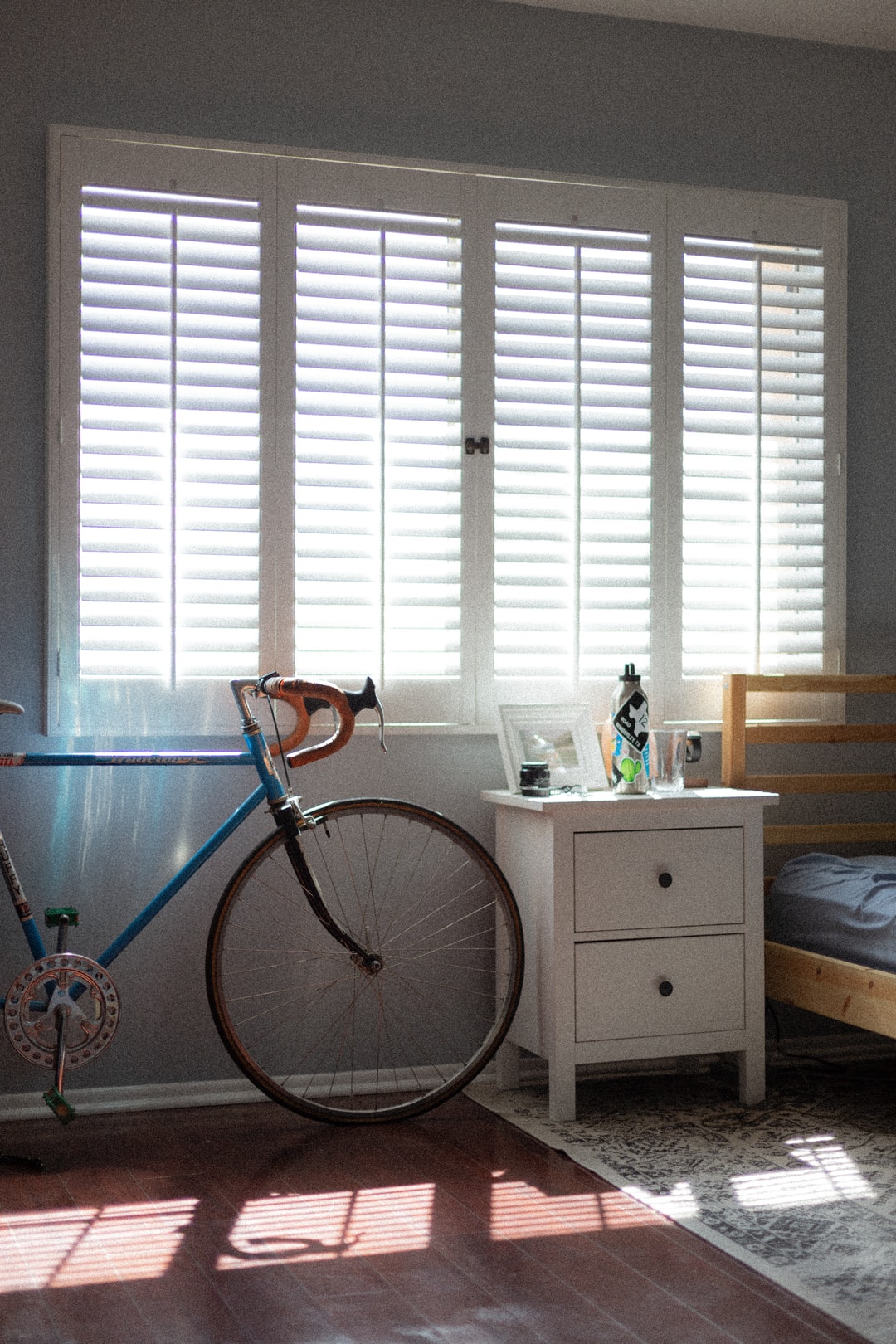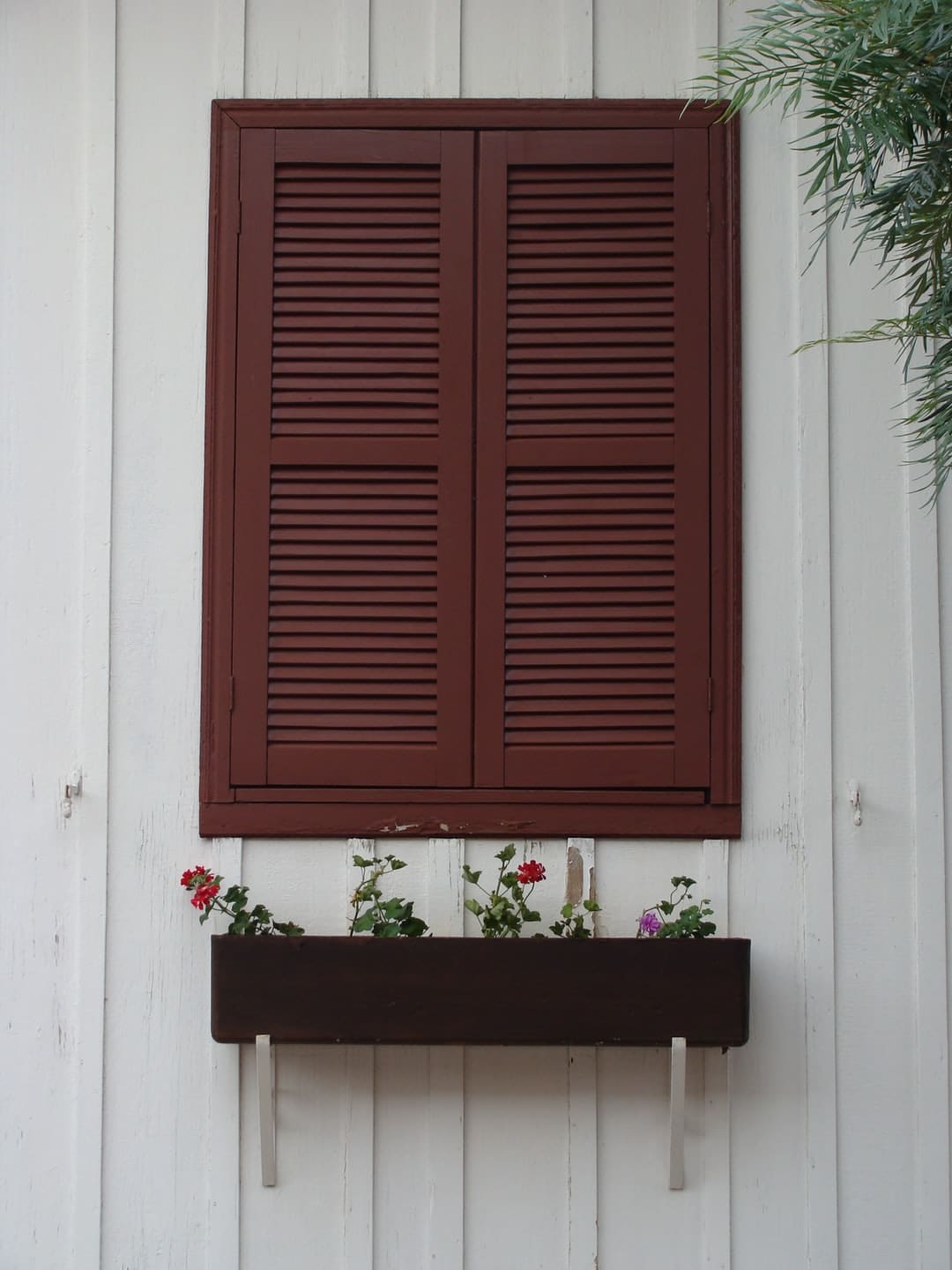How To Build Plantation Shutters For Windows
Shutters tin enhance any window. Plantation shutters, in particular, are a very pop and functional option, but they can be expensive! This is why learning to make your own DIY shutters can exist a fun project that also saves some cold hard cash!
Making your own DIY plantation shutters tin can exist easily done from plywood with a little time and the helpful steps beneath. Read on for a DIY project that will brand your home more comfortable and aesthetically pleasing!
The benefits of DIY plantation shutters
Plantation shutters aren't just for looks. They provide insulation on cold and hot days. They can help you keep the heat out during the summer and offer a layer of protection against the cold. Plantation shutters seal upwardly against the window frame, reducing the escape of air.
This energy-efficient pick is also easy to clean with a vacuum cleaner castor attachment. They also avoid the need for any cords that may be reachable at low levels for pets and kids. Instead, they apply a control arm on slats, making them both prophylactic and sturdy.
How to make plantation shutters (DIY)
The tools y'all'll need
- Tape Measure out
- Drill
- Miter Saw
- 1 3/8″ Shank Forstner Drill Scrap
- Router Roundover Scrap
- Drill Bits
- Skill Saw
- Table Saw
- Kreg Jig
- vii/64″ Self Centering Drill Flake
- Woods Router
- Metal Snips
- Scratch Awl
The materials y'all'll need
- 4'x8′ – 3/four″ Plywood (x1)
- 8″x27″ Flat Sheet of Metal
- Frameless Cabinet Hinges
- Wood Glue
- four'x8′ – 1/ii″ Plywood (x2)
- Metal Pop Rivets
- i one/iv″ pocket hole screws
- ane″ Finish Nails
How to create your own DIY shutters: Step by Step
Step one – Cut frame and slats
Start with ¾" plywood and cutting using a skill saw to turn the full canvas of plywood into four smaller pieces. The inside window and louvre frames are made using ¾" plywood. The slats will exist made from ½" plywood. Cut the ½" plywood into smaller sections, then cutting the slats with a tabular array saw, ensuring each cut is perfectly directly.
Step 2 – Chamfer each slat
Use a wood router to make the front and dorsum slats rounded. A simple round-over bit should exercise the trick to sleeping room the edges. A router table is preferable to chamfer the corners perfectly.

Step iii – Trim slats
The control arm that will open and close your slats can exist placed on the forepart or back. The arm is a flat sheet of metal that joins the slats together. For this, each slat needs a notch cut out on the back. Use a table saw and raise the blade five/viii of an inch. Clamp several slats together, then cut a notch the aforementioned thickness as the saw blade.
Step 4 – Drilling holes on each slat
Your slat holes demand to be exactly in the centre of each slat to ensure fifty-fifty gaps between them. Use a drill press and drill straight and evenly centred holes.
Stride 5 – Chamfer the runway boards
The louvre frame will characteristic ii side pieces attached to the slats on the top and lesser runway. Use a tabular array saw to chamfer each lath at a 45-degree angle.
Footstep half-dozen – Drill pocket holes
Drill two pocket holes on the backside of the chamfered rails using a Kreg Jig. These holes will concord the louvre frame together. Make certain you set the Kreg Jig for ¾" forest thickness, then drill the holes.
Step 7 – Measure and marking the holes on the stile boards
The louvre stile pieces need to be measured from the lesser at five 1/ii″. This volition exist the centre of the get-go slat. From that mark, keep every 3″ until you get to the concluding mark at 5" from the top of the stile.
Step 8 – Drill holes for the frameless cabinet hinges
Frameless chiffonier hinges are an optimal pick for a more than minimal look, and they let you to open the louvres without knocking the trim. Apply a 1 3/8″ by 3/viii″ Shank Forstner Drill Bit forth with a 7/64″ Self Centering Swivel Drill Bit to drill holes for the hinges.
Measure 12″ from the bottom of the stile lath and 12″ from the top, and then place the hinge at the 12″ marking before pushing down on them with a scratch awl. This marks the position with a little dent. Drill a 1 3/8″ hole in the centre of the mark with a Shank Forstner drill scrap, then position the hinge inside the hole and pre-drill the screw positions using a self-centring hinge drill scrap on every stile board that requires it.
Pace 9 – Attach track to stile boards
Assemble the frame of the louvre by attaching the top and bottom rail to the board with the hinges. We recommend using ane ane/four″ pocket hole screws and wood glue. Insert the slats, ensuring the notch for the command arm is facing the stile lath with the hinges.
Step 10– Attach second stile lath
Accept the other stile board, inserting the slats into the holes, then attach the stile board to the rails using 1 1/4″ pocket pigsty screws and some wood glue. Attach the frameless cabinet hinges as well.
Stride xi – Making the control arm
This may be the almost complex part of the process:
- Use a flat sheet of metallic that is 27" long
- Cut 1" wide strips
- Measure ½" from the lesser and make a marker (this volition exist for a nail to control the first slat)
- Continue mark every 3" on the metal strip
- Employ sheet metal snips to cut out the control arm
- Place on a flat surface and hammer flat
- Use a scratch awl at the first ½" marking and hit it hard plenty to make the blast go through the metal slightly
- Echo this process for all of the marks
- Adhere the control arm to the louvre using 1 ¼" stop nails
Step 12 – Gather the window frame
Your window frame will be the aforementioned size as the louvre. Start by drilling two pocket holes on both sides of the upper and lower frame board. Adhere these boards with wood glue and 1 1/4″ pocket hole screws. Assemble the frame and attach the hinge'due south mounting plate to the inside. Measure 12" from the meridian and bottom of the window frame, then attach the louvre to the frame. Screwing a small mounting plate hinge by itself is easier than holding the louvre while trying to attach information technology.
Footstep 13 – Paint and install
Pigment the window frame and the louvres before installing. Allow it all to dry, then insert the frame in the window, securing information technology with wood screws. Attach the louvre hinges to the mounting plates on all of the frame windows.

Oft asked questions
Are DIY shutters easy to brand?
Board-and-batten shutters are easy to make and are a nifty manner to add erstwhile-mode amuse to your domicile, protect windows and increase the security of your habitation.
What kind of wood exercise you lot use to make shutters?
Plywood and basswood are popular options for shutters. They can be painted and stained and are flexible and lite, perfect for a diversity of designs. The simply downside is that they are more expensive when compared with constructed shutters.
Tin can you lot make shutters out of pine?
Yes, pine is a nifty option for outside shutters and areas with mild, minimal temperature fluctuations. Pine is, however, a softwood that expands and contracts, meaning the internal movement over fourth dimension will make them somewhat more than susceptible to h2o damage.
Building shutters to improve your dwelling house
Information technology may be clear that the steps in a higher place are not for the absolute beginner. You lot'll need some specific tools and knowledge of how to use them. If you are equipped with all of this, we hope y'all create some stunning shutters that improve the look and your dwelling house with ease!
If this may be a niggling above your DIY pay grade, there is no shortage of skilled Taskers who tin assistance with shutter repair and installation. Toll-effective shutter options are still inside reach for those who choose not to create them from scratch themselves.
If you are a DIY wiz and have mastered the DIY shutters, keep reading our How Tos and try other dwelling house improvements! We tin help you acquire how to screen a porch, remove wallpaper, keep your windows and mirrors clean and measure your curtains correctly for a new look. Additionally, check out our privacy fence ideas article for added privacy.
Improving your DIY skills offers the bonus of a much nicer home! Go reading, scissure out the tools and enjoy come creative changes to your space today.
Source: https://www.airtasker.com/blog/how-to-diy-shutters/
Posted by: stubbswinge1946.blogspot.com

0 Response to "How To Build Plantation Shutters For Windows"
Post a Comment